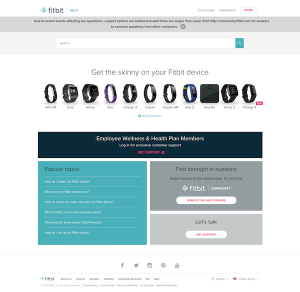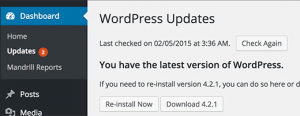In the lands of B2C and B2B advertising, no one is a stranger to targeting. However, a recent study reported that 76% of marketers do not utilize behavioral data in segmentation or targeting. It also showed that only 38% believe they are capable of targeting prospects versus returning customers — concluding that “there’s a disconnect between segmentation development and execution.”
The most obvious advantage of the digital medium is the data it allows us to curate. As it has evolved from simple, static desktop sites into responsive, interactive experiences, the advertising opportunities have made a few leaps as well. Gone are the days posting a single, static banner ad in hopes of seeing someone click through. Now, we submit to networks — data houses that empower us to reach individual people that match our target. Anywhere on the web. At any time. While doing anything.
Let’s break down how that works real fast. You, are an awesome advertiser with a message to promote or product to sell. You know your target audience — if not in super detail, then at least vaguely — and you have a budget for reaching them. But, you’re smart. You want to be efficient and you want to reach as many people in your target as possible for the money you invest.
Enter, your network. Your network is home to ample amounts of encrypted data about the audience you’re trying to reach — including who they are, what they’re interested in, when they’re online, where they’re at, why they’re likely to engage with your brand and how they’re best reached. Input your campaign and target details into your network and it will amplify your message across the web, directly to your most valuable audiences.

Don’t have a network? We’re slightly AdStation biased (or any of the Adknowledge networks, really).
The network is only part of the puzzle though. It’s important that you understand what you’re getting from your network and know the options available to you with such a plethora of data to leverage. We’ve collected a go-to guide of the targeting terms and techniques you need to know. Use them to expand on current campaigns and find new success in reaching your target audience.
Contextual Targeting
Contextual targeting allows for ads to be displayed within a site, email or mobile experience based on the context of the page. The page is crawled for keywords, then an automated system selects and serves a relevant ad based on content the user has already showed interest in. For example, while shopping for a tropical vacation, the user may see an ad for a bikini shop. The bikini advertiser may have purchased contextual ad placements based on specific keywords that would display in the related page — “beach,” “vacation,” “oceanview.” Because of their relevance within the page, contextual ads are considered more appealing and engaging than other ad placements.
Demographic or Environmental Targeting
Demographics provide a tested and true method of targeting that most advertisers are highly comfortable with and quick to use. It’s expected given that this form of targeting is primarily how we reached audiences in print, prior to the rise of digital publishing. Demographics include gender, age, social class, ethnicity, language, employment status, location and more. Demographic targeting uses generalizations about groups of people to serve ads that are expected to be engaging. While the demographic data available is useful, targeting online is typically more effective when demographics are leveraged in combination with another form of targeting.
Behavioral or Psychographic Targeting
Remember when we mentioned that stat way up at the start of this post? This is the targeting that 76% of marketers aren’t using. Coincidentally, it can be among the most powerful of options if you know how to use it. Behavioral targeting provides a unique opportunity for advertisers to reach audiences based on data stored in the user’s web browser. ‘Cookies’ store site-specific data within the user’s browser — pages visited, searches conducted, etc. Leveraging that data, networks can target users based on previous, current and predicted behaviors.
You can even expand on demographic targeting to create behavioral targeting parameters, in the right network. For example, you’ve identified your audience as 20-30-year-old females with interests in skateboarding and fashion. When compared with data in the network, you learn that these women can not only be reached through websites with skater shoes, but they also frequently visit sites related to energy drinks and laws for local parks. Using this new pattern, or “profile,” you can expand your reach to previously unidentified women that also show this combination of interests.
Geotargeting
Yes, we did mention above that location is a demographic variable. But, with the rise of social media check-ins and smartphones continuously tracking location — geotargeting has earned its own mention. And it more than deserves it.
Geotargeting uses the geolocation of a website visitor (the physical location at this moment, not a self-identified location such as a headquarters or home city) to serve content or ads that are relevant to the country, region, city, building, etc. in which the person is present. The method is most likely to grow with popularity among mobile advertisers for its ability to deliver focused, highly relevant advertisements at key decision-making/actionable moments.
Consider that your target user has walked into a retail store and is researching products similar to yours. Through geotargeting, the site will recognize the location the of user. That data is relayed to your network and, because of your set campaign parameters, your network is able to serve your ad promoting the values of your product vs. the others.
Through these four (and growing) strategies for targeting, your options for reaching your target audience are nearly infinite. Leverage one method or combine them for even more focused and efficient reach — and see the improvements in engagement, conversions and ROI in your next email marketing campaign.
This post originally appeared on the AdStation blog.
(326)
Report Post







